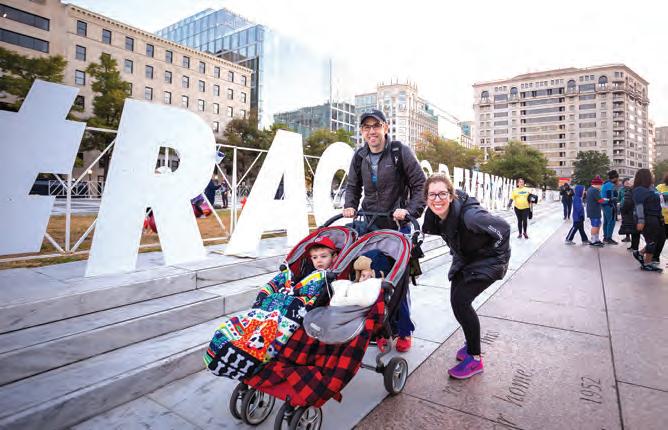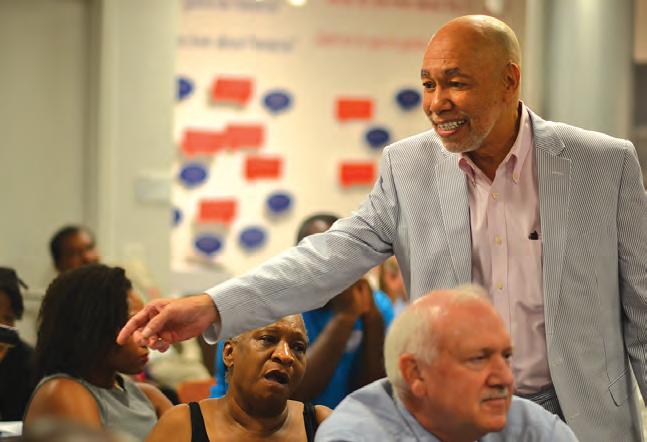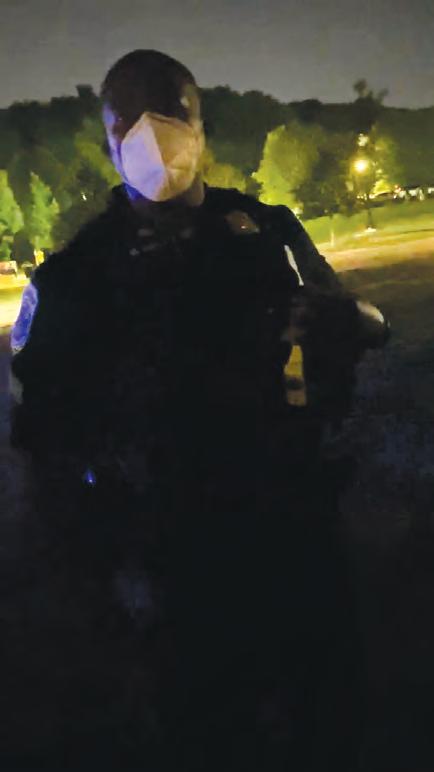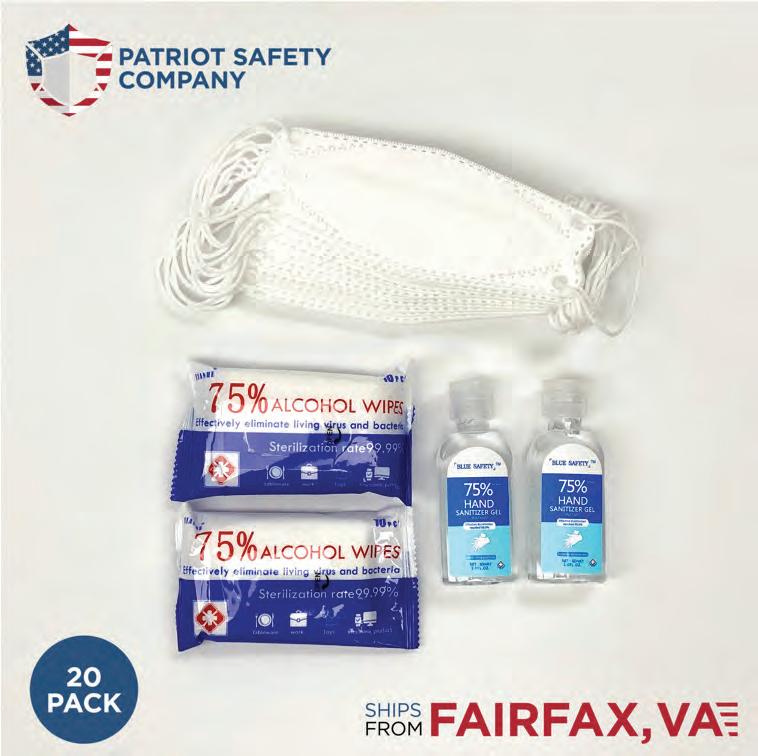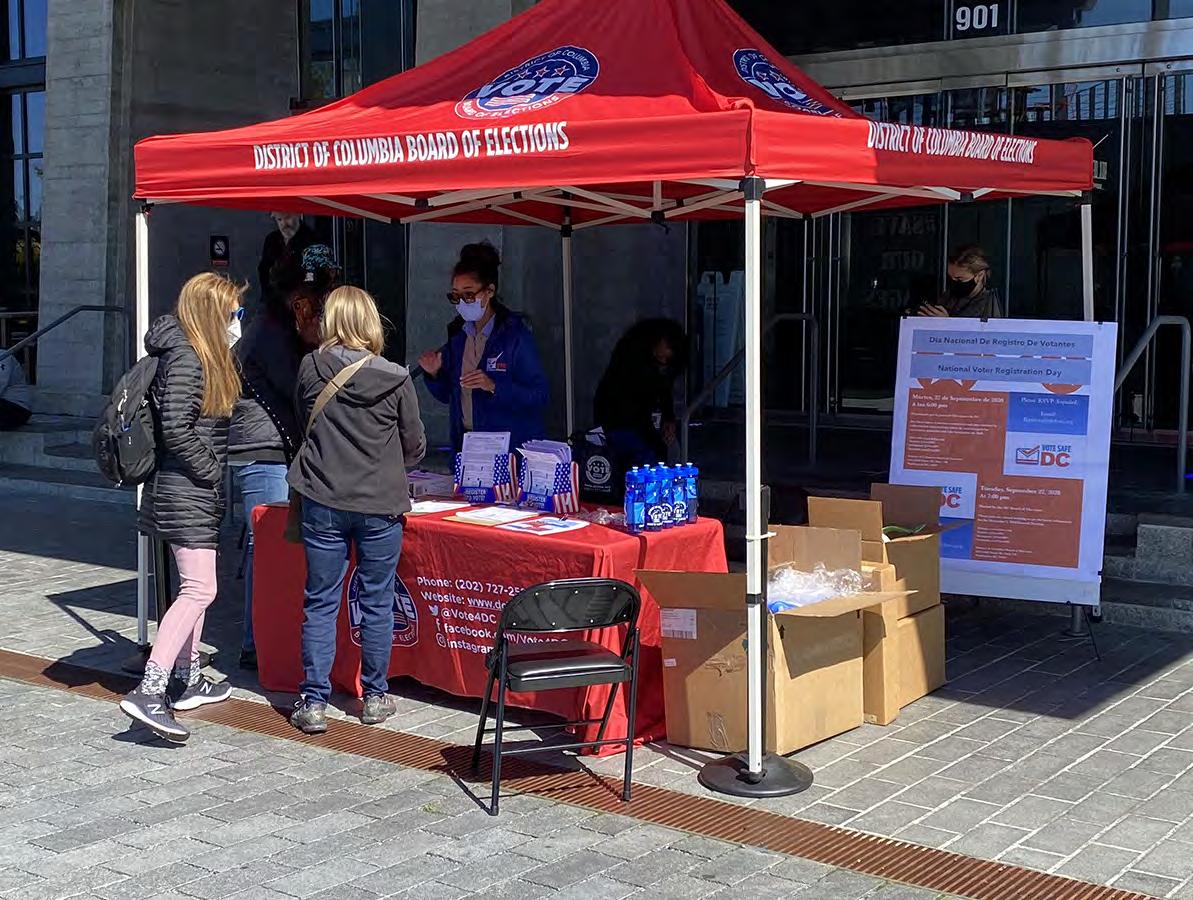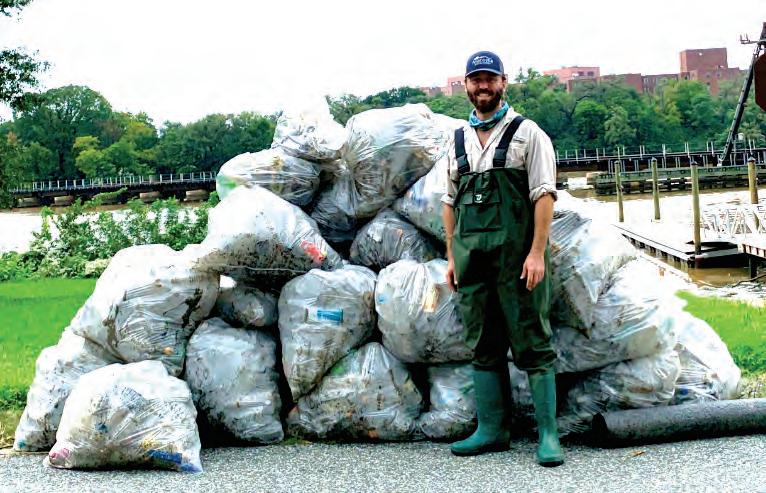neighborhood news
Our River: The Anacostia Keeping Score with the Riverkeeper
T
he Anacostia Riverkeeper is part of the Waterkeeper Alliance, which operates along rivers and their watersheds all around the world. There are 18 Waterkeeper organizations operating throughout the Chesapeake watershed alone. The interim Anacostia riverkeeper is Trey Sherard, who has spent the past eight and a half years working with communities along our river. Sherard also serves as chair of the Anacostia Watershed Citizen Advisory Committee hosted by the Metropolitan Council of Governments. And he is a member of the Mayor’s Leadership Coordinating Council for the River. Sherard grew up along the Atlantic coast in Wilmington, North Carolina, and studied marine biology at Duke. I spent some time recently learning what the riverkeeper is doing, and asked about progress on the Anacostia.
Engaging the Public
The riverkeeper’s main task, I learned, is to reach out and engage the public in the clean-up progress along the Anacostia, and to assess the work to be done and how to make it happen. Depending on the issue, the job is to engage communities, neighborhoods, families and/or individuals. This includes learning what is possible through such activities as fishing, kayaking, boat tours and citizen monitoring of water quality. “We also demonstrate green infrastructure actions at churches and other large community gathering places that you can carry out at home on your property – such things as controlling stormwater runoff by installing rain barrels or rain gardens, Sherard says. “Also, there are some issues where the political clout of organized citizens is the best way to assure a positive response from government or the private sector.” 30
E a s t o f t h e R i v er D C N e w s . c o m
by Bill Matuszeski
Measuring Progress
Sherard is quite pleased with progress to date and is looking forward to more. One of the big issues is the handling of combined sewer overflows or CSOs. Nearly all the older US cities, for the last century or more, have used stormwater runoff to flush out the sanitary sewer effluents from houses and businesses. But the engineers who designed and installed these systems failed to envision the increased stormwater flow from development and paving over the years. Since it would be a Trey Sherard proudly surrounded by Anacostia River trash. Photo: Anacostia Riverkeeper disaster to allow the combined sewers to back up es until they were banned in 1979. They into basements or overCommunicating have ended up in air, water, soil and fish flow into the streets, they were designed and Monitoring and do not break down. The company has to discharge directly into rivers and As Sherard sees it, “The key now is to esagreed to pay $52 million to help pay for streams during a storm. Soon there was tablish a credible information system to the clean-up. a call for clean-up, and since separating designate what is safe to do where – swimIn another important action, the Dethe sewer lines was prohibitive, in many ming, fishing or whatever. The combined partment of Energy & Environment cities the decision was made to build tunsewers are not the only sources of pollut(DOEE) has delivered the interim record nels to store the combined sewage until it ants, so more needs to be done. And there of decision (ROD) to define how they will could be handled by the treatment plants. must more efforts supported to engage the clean up contaminated sediments in the DC has been leading this effort napublic in helping monitor water quality River. “The ROD is focused on a numtionally, and the system designed for the and cleanup efforts themselves to know ber of sites where the most serious polAnacostia, which is well underway, is the what is safe, when and where.” lution is evident,” says Sherard, “but the best in the region. There has already been Sherard also believes that control clean-up of these early action areas will be a 90% reduction in combined sewer overand reduction of toxic pollution has been just the first big steps toward the successflows in the Anacostia, and when the tunhelped by DC’s recent legal settlement ful cleanup of over a century of toxics ennel system is complete in 2023 that will with Monsanto related to PCBs, a partering the River.” The interim ROD and go up to 98%. ticularly nasty family of toxic chemicals other related reports are available at www. Sherard is also pleased with the new found throughout much of Our River and anacostiasedimentproject.com. trash collection boats run by DC Water, known to cause cancer and life-long learnwhich appear to be doing a good job of ing disabilities in children born to mothgathering up much of the trash that has ers exposed to them. PCBs were proMore to Be Done entered the system through direct runoff, duced by Monsanto and used in paints, All this is not to say that everything is fine. sewers or other sources. sealants, caulking and electric appliancAs optimistic as Sherard is about the prog-


